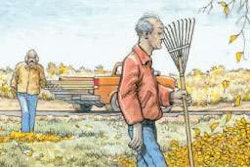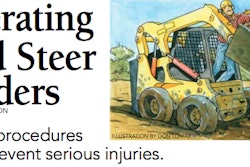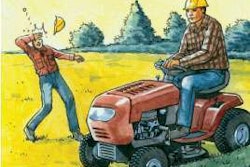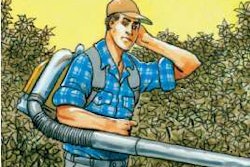
The accident: A landscape worker is preparing to install a row of shrubbery along a residential property line.
His supervisor called 811 to notify utility companies the previous week, and all of them have marked their lines. Unfortunately, gas, electric and water lines run parallel to the property line in the area where the worker was instructed to plant the shrubs.
He inspects the markings and determines there is a 5-foot-wide space between the electric and water lines. Deciding to plant the shrubs in this zone, he uses a powered hand-held earth auger to dig the first hole. The auger contacts an electric line, transferring a fatal high-voltage shock to the operator via its metal handles.
The bottom line: The rapid expansion of underground utility systems makes following proper digging protocols more important than ever, says Dennis Von Ruden, president of General Equipment. “Don’t take it for granted that every utility line is always marked precisely,” he warns. “I’ve seen too many times where a utility line was improperly marked or not even marked at all.”
“Locating practices not sufficient” is the third most prevalent root cause of underground utility damage, accounting for 25 percent of incidents, according to the Common Ground Alliance’s 2011 DIRT Report.
Because he was disturbing ground within 40 inches of markings, the worker should have used his hands or vacuum-excavation methods to expose the water and electric lines – if he proceeded with the job at all.
Be aware underground utility lines are commonly buried near property lines, increasing danger since property owners often want privacy barriers such as fences and plants installed in these areas. Someone from your company should call 811 (the national Call Before You Dig number) at least 72 hours prior to digging. If the handles of digging equipment you use are made of steel or aluminum, ask your supervisor or company owner for equipment with nonconductive handles made of wood, fiberglass or composite material. Even then, you should never use anything in damp conditions like rain or snow.
Reduce risks
• Note the presence of landscape lighting, water features, sprinkler systems and wired-up storage/outbuildings.
• Clear everyone from the vicinity, shut off or extinguish sources of ignition such as equipment, vehicles and cigarettes and notify a supervisor if you damage a fuel line.
• Refrain from dismounting a machine that is touching an electric line. If you must leave the machine, jump off as far out as possible instead of stepping off in a routine manner.
By Olivia Grider











